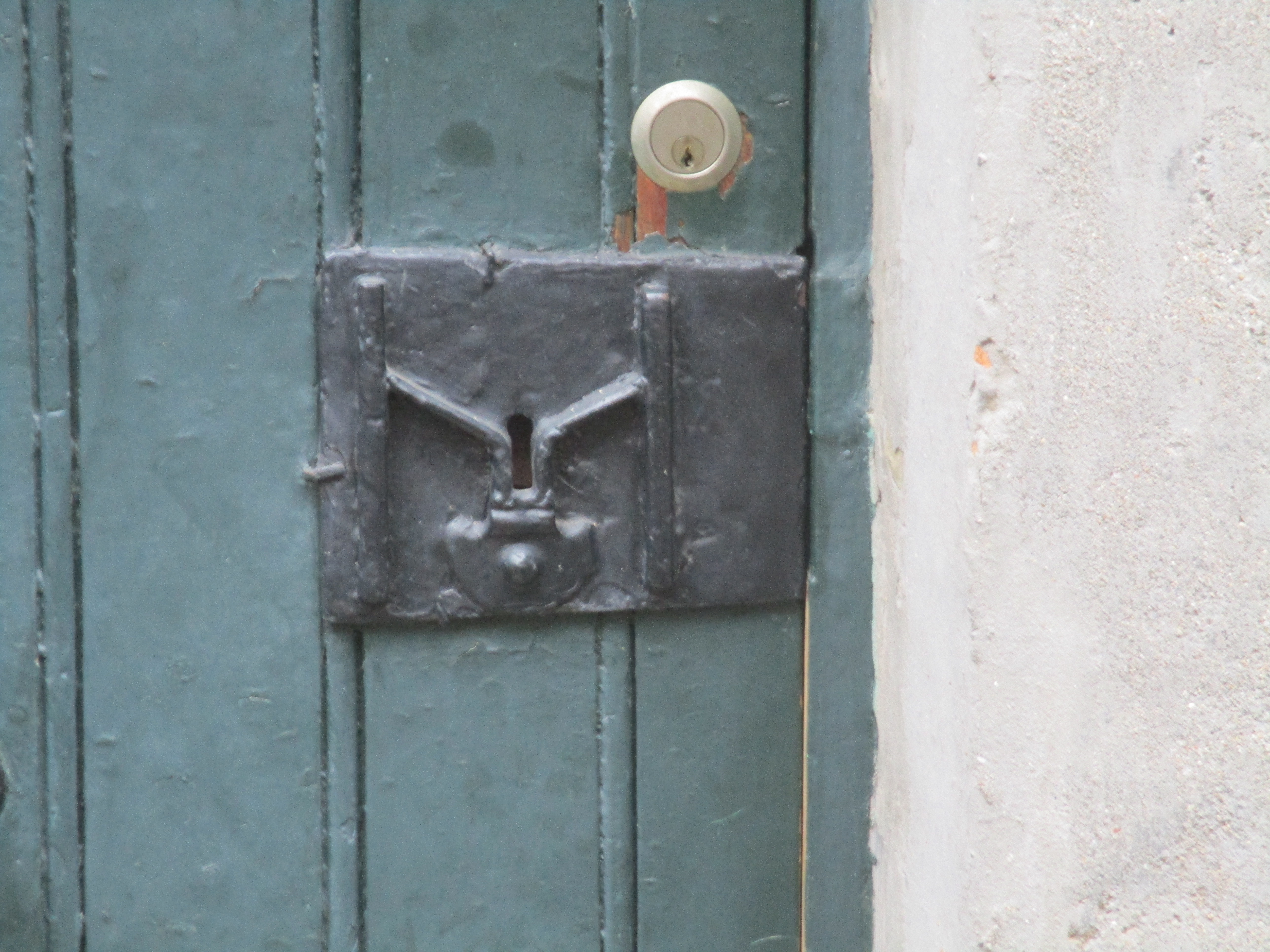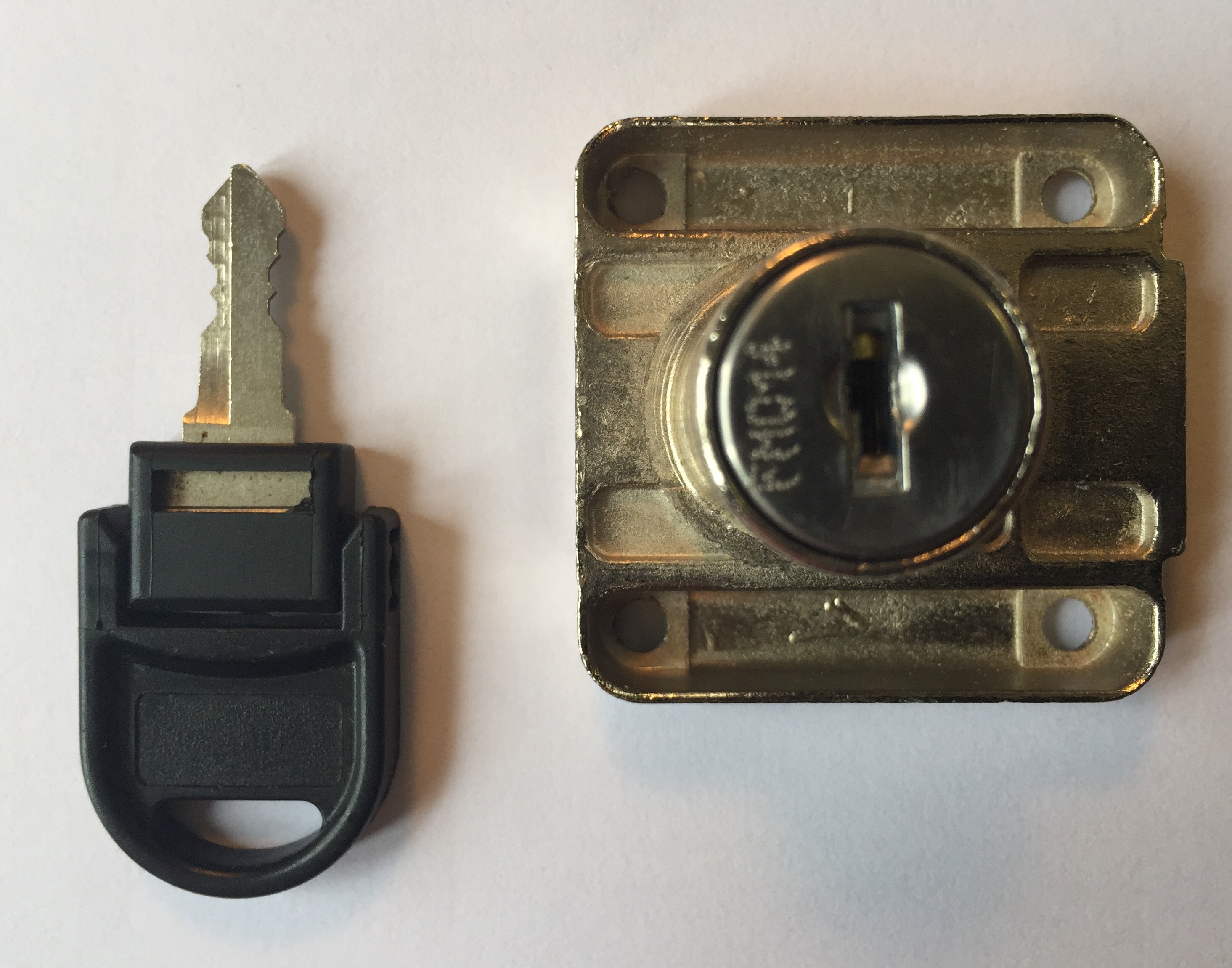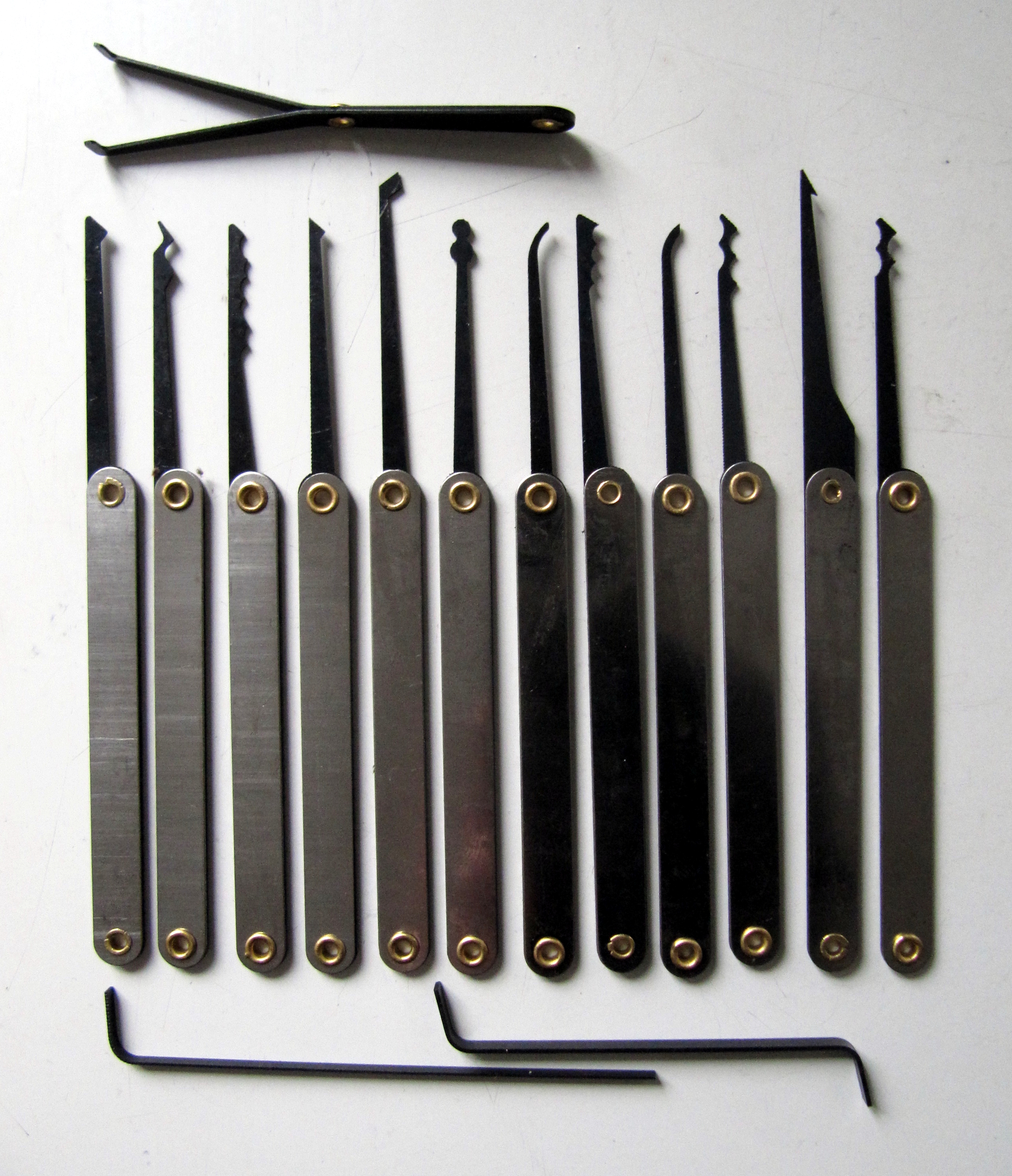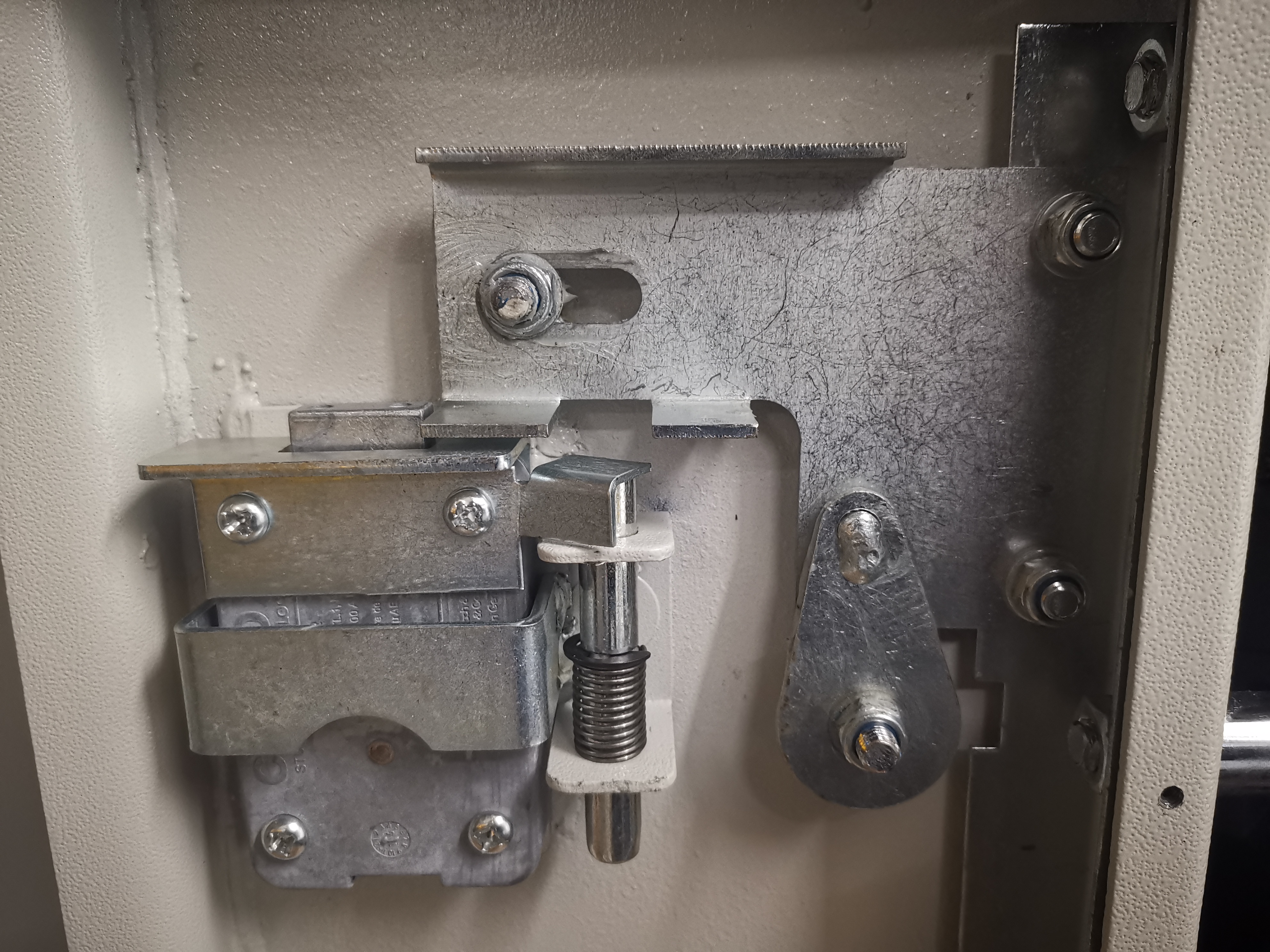|
Disc Tumbler Lock
A disc tumbler or disc detainer lock is a lock and key, lock composed of slotted rotating detainer discs. The lock was invented by Finnish founder of Abloy, Emil Henriksson (1886–1959) in 1907 and first manufactured under the Abloy brand in 1918. Design Disc tumbler locks are composed of slotted rotating detainer discs. A specially cut key rotates these discs like the tumblers of a safe to align the slots, allowing the sidebar to drop into the slots, thus opening the lock. Unlike a wafer tumbler lock or a pin tumbler lock, this mechanism does not use springs. Because they do not contain springs, they are better suited for areas with harsh conditions and are often used at outdoor locations like railroad and public utility installations. The original Abloy Classic design consists of a notched semi-cylindrical key, and a lock with detainer discs with holes ranging from a semicircle (180°) to a 3/4 circle (270°). The key is inserted and rotated 90°. Notches, machined to an a ... [...More Info...] [...Related Items...] OR: [Wikipedia] [Google] [Baidu] |
Lock And Key
A lock is a mechanical or electronic fastening device that is released by a physical object (such as a key, keycard, fingerprint, RFID card, security token or coin), by supplying secret information (such as a number or letter permutation or password), by a combination thereof, or it may only be able to be opened from one side, such as a door chain. A key is a device that is used to operate a lock (to lock or unlock it). A typical key is a small piece of metal consisting of two parts: the '' bit'' or ''blade'', which slides into the keyway of the lock and distinguishes between different keys, and the ''bow'', which is left protruding so that torque can be applied by the user. In its simplest implementation, a key operates one lock or set of locks that are keyed alike, a lock/key system where each similarly keyed lock requires the same, unique key. The key serves as a security token for access to the locked area; locks are meant to only allow persons having the correct key to ... [...More Info...] [...Related Items...] OR: [Wikipedia] [Google] [Baidu] |
Abloy
Assa Abloy AB is a Swedish Group whose offerings include products and services related to locks, doors, gates, and entrance automation. Related products and services include controlling access and confirming identities with keys, cards, tags, mobile, and biometric identity verification systems. The company was formed in 1994, when Assa AB was separated from Swedish security firm Securitas AB. Shortly thereafter, Assa AB merged with the Finnish high security lock manufacturer Abloy Oy (based in Joensuu, a then subsidiary of the Finnish company Wärtsilä). The company was introduced to the Stockholm Stock Exchange later the same year. Assa Abloy has since made over 300 acquisitions including Yale, Chubb Locks, Medeco in the United States, Mul-T-Lock in Israel and Fichet-Bauche in France. Its two largest shareholders are Latour and Melker Schörling AB. Name Assa Abloy was founded at the merger of the two companies Assa and Abloy in 1994. Assa stands for August Stenman Stenm ... [...More Info...] [...Related Items...] OR: [Wikipedia] [Google] [Baidu] |
Emil Henriksson
{{Disambiguation ...
Emil may refer to: Literature *''Emil and the Detectives'' (1929), a children's novel *"Emil", nickname of the Kurt Maschler Award for integrated text and illustration (1982–1999) *''Emil i Lönneberga'', a series of children's novels by Astrid Lindgren People *Emil (given name), including a list of people with the given name ''Emil'' or ''Emile'' *Aquila Emil (died 2011), Papua New Guinean rugby league footballer Other *Emil (river), in China and Kazakhstan *Emil (tank), a Swedish tank developed in the 1950s *Sturer Emil, a German tank destroyer See also * * Emile (other) *Aemilius (other) *Emilio (other) *Emílio (other) *Emilios (other) Emilios, or Aimilios, (Greek: Αιμίλιος) is a variant of the given names Emil (other), Emil, Emilio (other), Emilio and Emílio (other), Emílio, and may refer to: *Aimilios Veakis, Greek actor *Aimilios Papathanas ... [...More Info...] [...Related Items...] OR: [Wikipedia] [Google] [Baidu] |
Wafer Tumbler Lock
A wafer tumbler lock is a type of Lock (security device), lock that uses a set of flat wafers to prevent the lock from opening unless the correct key is inserted. This type of lock is similar to the pin tumbler lock and works on a similar principle. However, unlike the pin tumbler lock, where each pin consists of two or more pieces, each wafer in the lock is a single piece. The wafer tumbler lock is often incorrectly referred to as a disc tumbler lock, which uses an entirely different mechanism. Early development The earliest record of the wafer tumbler lock in the United States is a patent from 1868 by Philo Felter. Manufactured in Cazenovia, New York, Cazenovia, New York, it used a flat double-bitted key. Felter's lock was patented only three years after Linus Yale, Jr. received a patent for his revolutionary pin tumbler mortise lock, considered to be the first pin tumbler lock of the modern era. That lock featured a flat steel key, referred to as a "feather key" because of t ... [...More Info...] [...Related Items...] OR: [Wikipedia] [Google] [Baidu] |
Pin Tumbler Lock
The pin tumbler lock, also known as the Yale lock after the inventor of the modern version, is a lock mechanism that uses pins of varying lengths to prevent the lock from opening without the correct key. Pin tumblers are most commonly employed in cylinder locks, but may also be found in tubular pin tumbler locks (also known as radial locks or ace locks). History The first known example of a tumbler lock was found in the ruins of the Palace of Khorsabad built by king Sargon II (721–705 BC.) in Iraq.James, Peter, and I. J. Thorpe. Ancient Inventions. New York: Ballantine, 1994. Basic principles of the pin tumbler lock may date as far back as 2000 BC in Egypt; the lock consisted of a wooden post affixed to the door and a horizontal bolt that slid into the post. The bolt had vertical openings into which a set of pins fitted. These could be lifted, using a key, to a sufficient height to allow the bolt to move and unlock the door. This wooden lock was one of Egy ... [...More Info...] [...Related Items...] OR: [Wikipedia] [Google] [Baidu] |
Lock Picking
Lock picking is the practice of unlocking a Lock (security device), lock by manipulating the components of the lock device without the original key. Although lock-picking can be associated with Intention (criminal law), criminal intent, it is an essential skill for the legitimate profession of locksmithing, and is also pursued by law-abiding citizens as a useful skill to learn, or simply as a hobby (locksport). In some countries, such as Japan, lock-picking tools are illegal for most people to possess, but in many others, they are available and legal to own as long as there is no intent to use them for criminal purposes. History Lock (security device), Locks by definition secure or fasten something with the intention that access is possible only with the matching key. Despite this, criminal lock picking likely started with the first locks. Famed locksmith Alfred Charles Hobbs said in the mid-1800s: Professional and recreational lock picking also has a long history. Ki ... [...More Info...] [...Related Items...] OR: [Wikipedia] [Google] [Baidu] |
Lever Tumbler Lock
A lever is a simple machine consisting of a beam or rigid rod pivoted at a fixed hinge, or '' fulcrum''. A lever is a rigid body capable of rotating on a point on itself. On the basis of the locations of fulcrum, load, and effort, the lever is divided into three types. It is one of the six simple machines identified by Renaissance scientists. A lever amplifies an input force to provide a greater output force, which is said to provide leverage, which is mechanical advantage gained in the system, equal to the ratio of the output force to the input force. As such, the lever is a mechanical advantage device, trading off force against movement. Etymology The word "lever" entered English around 1300 from . This sprang from the stem of the verb ''lever'', meaning "to raise". The verb, in turn, goes back to , itself from the adjective ''levis'', meaning "light" (as in "not heavy"). The word's primary origin is the Proto-Indo-European stem , meaning "light", "easy", or "nimble", ... [...More Info...] [...Related Items...] OR: [Wikipedia] [Google] [Baidu] |
Lock Bumping
Lock bumping is a lock picking technique for opening a pin tumbler lock using a specially crafted bump key, rapping key or 999 key. A bump key must correspond to the target lock in order to function correctly. History A US patent first appears in 1928 by H. R. Simpson called a rapping key.''High Security Mechanical Locks - An Encyclopaedic Reference'' published by Graham W. Pulford 2007, p. 19 In the 1970s, locksmiths in Denmark shared a technique for knocking on a lock cylinder while applying slight pressure to the back of the lock plug. When the pins would jump inside of the cylinder, the plug would be able to slide out freely, thus enabling the locksmith to disassemble the lock quickly. The use of a bump key was not introduced until some time later and was first recognized as a potential security problem around 2002–2003 by Klaus Noch, who brought it to the attention of the German media. After further examination of the procedure, a white paper was drafted in 2005 by Barr ... [...More Info...] [...Related Items...] OR: [Wikipedia] [Google] [Baidu] |
False Gate
This is a glossary of locksmithing terms. Glossary References External links {{Locksmithing Locksmithing Locksmithing is the work of creating and bypassing locks. Locksmithing is a traditional trade and in many countries requires completion of an apprenticeship. The level of formal education legally required varies by country, ranging from no formal ... Locksmithing Wikipedia glossaries using description lists ... [...More Info...] [...Related Items...] OR: [Wikipedia] [Google] [Baidu] |
Locks (security Device)
Lock(s) or Locked may refer to: Common meanings *Lock and key, a mechanical device used to secure items of importance *Lock (water navigation), a device for boats to transit between different levels of water, as in a canal Arts and entertainment * ''Lock'' (film), a 2016 Indian Punjabi-language film *Lock (waltz), a dance figure * ''The Lock'' (Constable), an 1824 painting by John Constable * ''The Lock'' (Fragonard) or ''The Bolt'', a 1777 painting by Jean-Honoré Fragonard * Lock (''Saga of the Skolian Empire''), a sentient machine in the novels by Catherine Asaro * ''Locks'' (album), by Garnet Crow, 2008 * ''Locked'' (film), a 2024 American thriller * ''Locked'' (miniseries), a 2020 Indian Telugu-language crime thriller *"Locked", a song by Mutha's Day Out from ''My Soul Is Wet'' (1993) * "Locked" (Incorrectly labeled “Gravity” in some places), a song by DJ3no made for the video game “ Ace Combat: Assault Horizon Legacy” (2011) * LOCK, the stage name of Rokka Asahi, ... [...More Info...] [...Related Items...] OR: [Wikipedia] [Google] [Baidu] |





